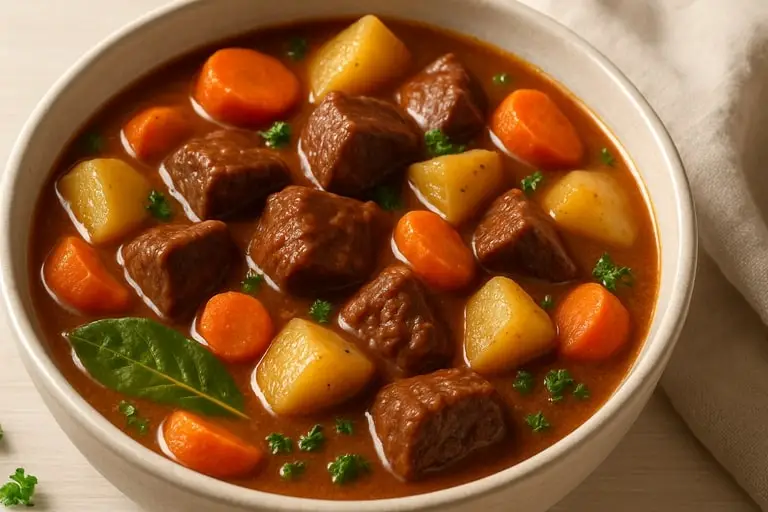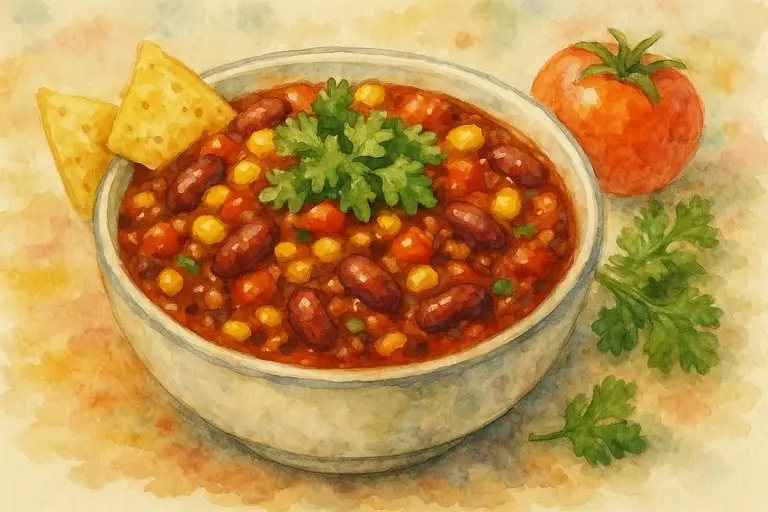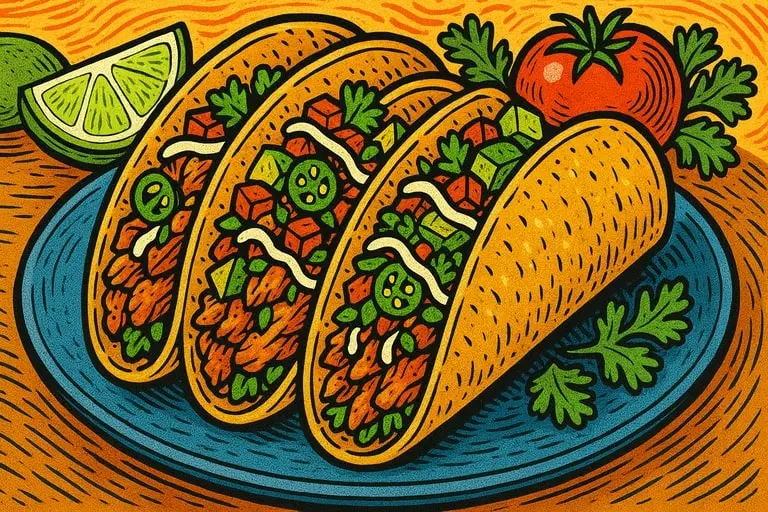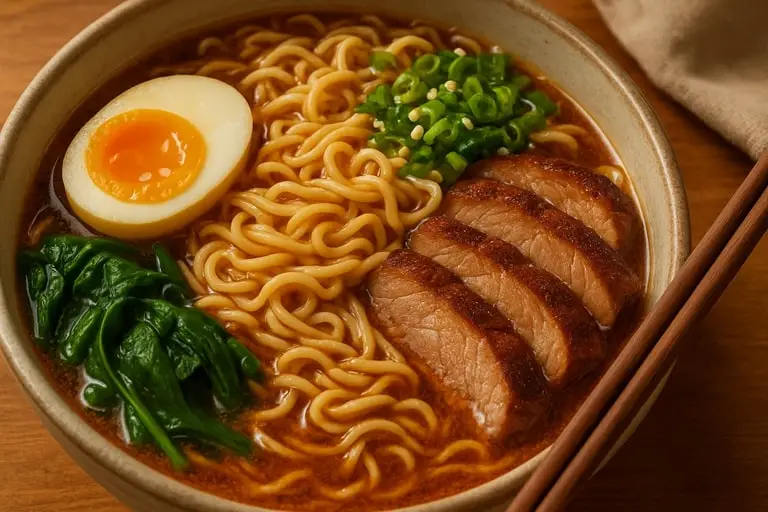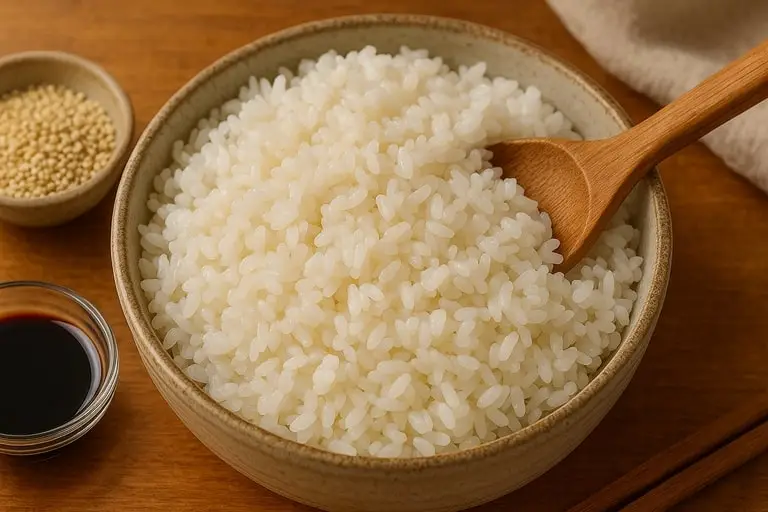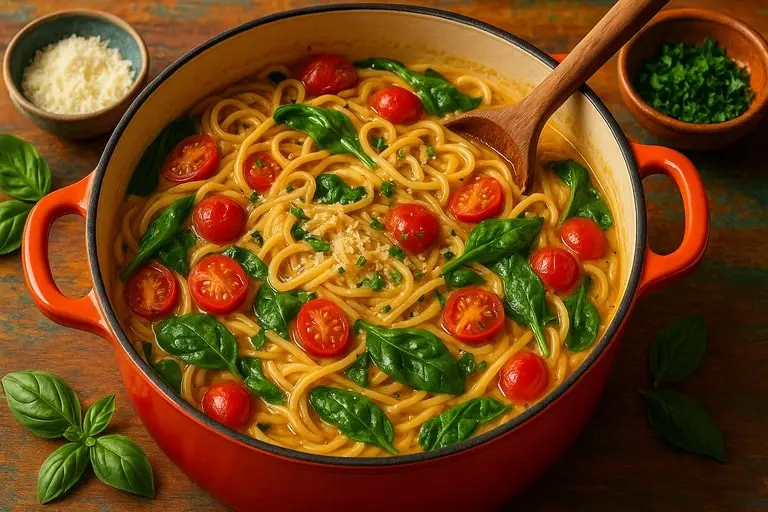Beef stew remains one of the most cherished comfort dishes in global cuisine, admired for its ability to transform humble ingredients into meals that embody warmth, nourishment, and togetherness. Its essence lies in slow cooking, where time and patience coax flavors from simple cuts of beef, vegetables, and aromatics into deep, complex harmony. From rustic European kitchens to contemporary tables worldwide, beef stew stands as a testament to culinary traditions that value resourcefulness, care, and shared experience.
The foundation of beef stew is its meat, typically tougher cuts rich in connective tissue such as chuck, brisket, or round. These cuts, unsuitable for quick cooking, release extraordinary tenderness and flavor when simmered slowly. As collagen breaks down into gelatin, it enriches the broth, thickening it naturally and lending a luxurious mouthfeel. This alchemy underscores the philosophy of stew: patience transforms the ordinary into the extraordinary.
Vegetables play equally vital roles. Carrots, onions, and potatoes often form the backbone, each contributing sweetness, depth, or heartiness. Celery, parsnips, or turnips add complexity, while mushrooms or tomatoes introduce umami richness. The long simmering time allows these ingredients to meld, creating layers of flavor where no element dominates but all contribute. This balance exemplifies the collaborative spirit of beef stew.
The broth, too, demands attention. Water alone produces simplicity, but stock, wine, or beer deepens the profile. Red wine brings boldness, deglazing caramelized bits from seared beef to create base notes of complexity. Beer adds rustic depth, while tomato paste or Worcestershire sauce introduces subtle tang. Seasoning with herbs such as thyme, bay leaf, or rosemary elevates the broth, transforming it into a fragrant medium that binds meat and vegetables together.
Culturally, beef stew carries symbolic resonance. In France, boeuf bourguignon elevates the dish with Burgundy wine, while in Ireland, stout-based stews reflect local traditions. In Hungary, goulash infuses paprika for signature spice, while in the Caribbean, flavors such as allspice or scotch bonnet peppers redefine the dish with regional vibrancy. These variations prove that beef stew transcends borders, adapting to local ingredients and tastes while retaining its fundamental identity as slow-cooked comfort.
The sensory experience of beef stew amplifies its appeal. The aroma of simmering broth fills a home with anticipation, while the sight of bubbling liquid and tender chunks signals nourishment. The warmth of a bowl in hand, combined with its rich flavor, creates not only satisfaction but a sense of grounding and belonging. Few dishes so effectively embody both sustenance and comfort.
Beef stew also reflects economy and resourcefulness. By utilizing inexpensive cuts and seasonal vegetables, households stretch ingredients into meals that sustain many. Leftovers often taste better the next day, as flavors continue to meld, enhancing both value and enjoyment. This practicality reinforces beef stew’s enduring role in family and community kitchens.
From a nutritional perspective, beef stew delivers balance. Protein from beef combines with fiber, vitamins, and minerals from vegetables, creating a dish that satisfies both palate and health needs. Broth-based versions emphasize lightness, while richer preparations with butter or cream indulge. This adaptability ensures that beef stew remains relevant to varied lifestyles and dietary goals.
Professional kitchens embrace beef stew as both challenge and opportunity. While rustic in essence, refined techniques elevate it into fine dining, where reductions, premium wines, or artisanal vegetables transform tradition into sophistication. Its versatility proves that beef stew is not limited to home cooking but thrives across culinary contexts, from casual to elegant.
Ultimately, beef stew symbolizes tradition, patience, and connection. Its enduring popularity reflects not only its flavor but also its cultural role as food that brings people together. In every simmering pot lies a narrative of heritage, care, and resilience, ensuring beef stew’s place as a timeless cornerstone of global cuisine.
Beef Stew Recipe and Cooking Mastery
Perfecting a beef stew recipe requires attentiveness to detail and respect for process. While seemingly simple, the interplay of searing, simmering, and seasoning defines the difference between an ordinary dish and one that lingers in memory. Mastery lies in understanding each stage of preparation and how it contributes to flavor, texture, and balance.
The first step in a beef stew recipe is searing the meat. High heat caramelizes the surface, creating the Maillard reaction that develops deep flavor. This step, often rushed, cannot be skipped; the browned crust contributes richness that simmering alone cannot achieve. Deglazing the pan with wine or broth lifts these browned bits, ensuring they infuse the stew rather than remain behind.
Next comes the layering of aromatics. Onions sautéed until translucent provide sweetness, garlic adds pungency, and carrots lend earthiness. Each element builds upon the last, creating a base that supports the stew’s complexity. Patience here ensures that vegetables release their full potential before liquid is added.
The liquid medium defines the stew’s depth. A classic beef stew recipe often combines stock with red wine, balancing umami with acidity. Beer or cider introduces rustic character, while tomato paste deepens umami. Herbs like thyme, bay leaf, or rosemary simmer gently, imparting fragrance without overwhelming. The choice of liquid and aromatics creates signature flavor, shaping the dish into personal or cultural expression.
Timing governs texture. A low simmer allows collagen in the beef to break down gradually, ensuring tenderness. Too high a heat risks toughness, while insufficient time leaves meat chewy. Vegetables are often added in stages—root vegetables earlier, delicate greens later—to preserve integrity. This choreography of timing ensures that each component reaches its peak without compromising others.
Thickening occurs naturally through gelatin released by beef, but flour or cornstarch may be added for body. Stirring occasionally prevents sticking while encouraging even distribution of flavor. This balance between attentiveness and patience exemplifies mastery, where the cook guides rather than forces transformation.
Resting enhances the stew. Allowing it to sit before serving lets flavors integrate further, while reheating gently the next day often produces superior results. This phenomenon reinforces the idea that beef stew is not merely a meal but an evolving experience, improving with time.
Modern adaptations of beef stew recipes reflect dietary and cultural shifts. Gluten-free thickeners, plant-based alternatives with mushrooms or legumes, and lighter broths for wellness-conscious diners broaden accessibility. Yet the essence remains: a slow-cooked dish that unites flavor and nourishment.
Professional interpretations push boundaries. Chefs may incorporate international spices, pair beef with unexpected vegetables, or serve stew alongside artisanal bread for contrast. Such innovations prove that mastery lies not in rigid tradition but in adaptability that respects heritage while embracing creativity.
The emotional satisfaction of beef stew recipes extends beyond taste. Preparing stew fills kitchens with activity, from chopping vegetables to stirring pots, fostering rhythm and connection. Sharing the final dish at a table reinforces communal bonds, making recipes not just instructions but rituals that shape memory.
Ultimately, mastering a beef stew recipe means respecting process, embracing patience, and allowing ingredients to reveal their full character. It demonstrates how culinary skill transforms the ordinary into extraordinary, preserving tradition while inviting innovation. Through every simmering pot, beef stew affirms its role as a dish of both comfort and artistry.
Beef Stew and Everyday Comfort
The role of beef stew in everyday comfort highlights how food sustains more than physical needs, offering reassurance, ritual, and connection. Beyond its rich flavor, beef stew embodies warmth, creating spaces of stability in daily life. Its place in households worldwide demonstrates that comfort food transcends cultural borders, uniting people through shared experiences of nourishment and care.
The aroma of beef stew simmering on a stove defines comfort for many. Hours of slow cooking release scents of herbs, meat, and vegetables that fill homes with anticipation. This olfactory experience transforms ordinary days into moments of ritual, where the act of waiting becomes part of the reward. Comfort arises not only from eating but from the sensory journey leading to the meal.
Beef stew also represents rhythm in households. Its preparation often aligns with weekends, holidays, or colder months, anchoring family schedules around shared meals. The act of chopping vegetables, searing meat, and stirring pots creates routine, grounding households in cycles of care and connection. In this sense, beef stew becomes more than sustenance—it becomes tradition.
Culturally, beef stew embodies generosity. A pot prepared often exceeds immediate needs, encouraging sharing with neighbors, friends, or extended family. Its abundance fosters community, making stew a dish associated with hospitality. In times of scarcity or crisis, it symbolizes resilience, stretching resources into sustenance while reinforcing solidarity.
The dish’s adaptability further reinforces its role in comfort. Ingredients shift with availability: potatoes may yield to rice, beef to lamb, or seasonal vegetables replace staples. These variations reflect resourcefulness, ensuring that stew remains relevant across circumstances. Its flexibility confirms that comfort arises not from rigid formulas but from adaptability rooted in care.
Psychologically, beef stew provides reassurance. Its warmth and heartiness evoke safety, offering solace during stress or uncertainty. A bowl of stew nourishes both body and spirit, reminding individuals of continuity and stability. This emotional resonance explains why stew features prominently in narratives of family, memory, and identity.
Modern lifestyles amplify its relevance. In fast-paced societies, beef stew encourages slowing down. Its preparation requires patience, aligning with movements that emphasize mindfulness and intentionality. Serving stew becomes an act of reclaiming time, reminding households of the value of shared meals over hurried consumption.
Even as trends shift toward convenience, stew adapts. Slow cookers and pressure cookers modernize preparation without erasing tradition, offering new ways to integrate the dish into contemporary routines. These tools preserve flavor and ritual while aligning with modern demands, ensuring stew’s survival in evolving contexts.
From a nutritional standpoint, beef stew reinforces comfort through balance. Protein, fiber, vitamins, and minerals converge in a single dish, delivering satisfaction without excess. Its wholesome composition aligns with evolving wellness priorities, proving that comfort need not conflict with health.
Ultimately, beef stew exemplifies everyday comfort by blending tradition, adaptability, and nourishment. It embodies generosity, resilience, and ritual, uniting people through flavors and practices that transcend time and place. Through every pot simmered, beef stew affirms its role as more than food—it is a vessel of memory, care, and continuity in daily life.
Slow cooking has always stood as a counterbalance to the fast pace of modern life, a method that emphasizes patience, depth, and transformation. At its essence, it is the art of allowing time and heat to work gradually on ingredients, coaxing out flavors, tenderizing textures, and weaving them into a harmonious whole.
Unlike quick techniques that deliver immediate gratification, slow cooking reminds us that food is not only about consumption but also about process, ritual, and respect. It is as much a philosophy as it is a method, teaching that the best results often come to those willing to wait.
The origins of slow cooking are deeply embedded in human history. Before the advent of stoves and ovens, communities relied on open fires and embers, placing pots near heat and allowing them to simmer throughout the day.
This practice was born out of necessity, as tougher cuts of meat, fibrous vegetables, and hearty grains required extended time to become edible and enjoyable. Yet necessity soon turned into tradition, and tradition into culture. The flavors developed through long simmering became markers of home, family, and belonging. In every corner of the world, dishes that rely on slow preparation — from stews to braises to soups — serve as reminders of how patience creates comfort.
What distinguishes slow cooking from other methods is its ability to transform humble ingredients into extraordinary meals. A tough piece of meat, rich in connective tissue, may seem unremarkable when raw, but under the influence of gentle heat over hours, it becomes tender, succulent, and deeply flavorful.
Vegetables surrender their firmness, releasing sweetness that enriches broths and sauces. Spices and herbs slowly permeate the dish, marrying with other components in a way that quick cooking cannot achieve. This transformation is what makes the method so universally beloved: it elevates the ordinary into something memorable, proving that greatness in cooking is often a matter of time rather than complexity.
The sensory journey of slow cooking is one of its greatest pleasures. The gentle bubbling of a pot on the stove or the faint hum of a slow cooker creates a background rhythm in the home. As hours pass, aromas evolve and intensify, filling every corner with warmth and anticipation. These scents carry emotional weight, evoking childhood kitchens, family gatherings, or festive occasions. By the time the dish is ready, it has already provided nourishment in another form: comfort, expectation, and atmosphere. Eating the meal completes the experience, but the process itself has already enriched the day.
Culturally, slow cooking takes countless forms, each reflecting local ingredients, climates, and traditions. In France, the slow-simmered coq au vin exemplifies rustic elegance, turning simple poultry into a luxurious dish through hours of braising in wine.
In Mexico, barbacoa is prepared underground, cooking slowly until meat falls apart at the touch. In India, curries and dals simmer gently, their spices mingling into layered complexity. In the American South, barbecue traditions reflect the same patience, smoke and heat working their magic over long hours. These examples show that while methods differ, the philosophy remains consistent: time unlocks flavor, and flavor creates memory.
In modern times, slow cooking has adapted to new technologies without losing its essence. The invention of electric slow cookers brought the method into homes around the world, making it accessible to busy families who could prepare meals in the morning and return in the evening to find dinner ready. Pressure cookers and multi-functional devices expanded the possibilities further, replicating the results of long cooking in less time, while still honoring the principle of transformation. Yet even with these shortcuts, the appeal of traditional slow simmering remains, offering not only taste but also the meditative rhythm of waiting.
From a nutritional standpoint, slow cooking carries unique benefits. Gentle heat preserves vitamins and minerals that might be lost in rapid, high-temperature methods. Lean proteins and fibrous vegetables soften without losing their essential qualities, making meals both nourishing and digestible. Because the process allows natural flavors to deepen, there is often less need for excessive fats or artificial seasonings.
Broths enriched by bones and vegetables become dense with nutrients, aligning health with pleasure in a way few other methods achieve. This combination of wellness and satisfaction has helped slow cooking remain relevant even in health-conscious cultures.
Psychologically, the act of preparing food in this way offers grounding in an otherwise hurried world. In an era where convenience dominates, choosing to let food simmer slowly is a statement of values: it prioritizes quality over speed, connection over consumption. The rhythm of preparation, of layering ingredients and stepping back as time does the work, creates space for reflection. It is no coincidence that slow cooking often coincides with family meals, where the food becomes a medium for conversation, bonding, and shared presence. The method not only feeds the body but also nourishes the mind and spirit.
Economically, slow cooking also represents wisdom. By embracing cuts of meat that are less expensive but rich in connective tissue, households can create luxurious meals without significant cost. Beans, grains, and root vegetables — affordable staples in many regions — become hearty, satisfying dishes when given time to cook gently.
This practical approach ensures that no ingredient is wasted, aligning with traditions of frugality and sustainability. For generations, families have relied on these principles to stretch resources, proving that patience can be a form of abundance.
The adaptability of slow cooking makes it timeless. It suits cold winter evenings as well as summer gatherings, formal dinners as well as casual family suppers. It can take the form of elaborate, spiced dishes that require careful layering of flavors, or simple broths and porridges that offer quiet comfort. Its flexibility ensures that it can be both everyday sustenance and celebratory feast. Even in fine dining, chefs draw on slow techniques to showcase depth and richness, demonstrating that patience holds a place in the highest forms of cuisine.
As food culture evolves, slow cooking continues to inspire. Movements such as the Slow Food philosophy, which began in Italy, echo its principles, advocating for meals prepared with care, consumed without haste, and appreciated in their entirety.
This philosophy resonates with the global desire to reconnect with traditions, to resist the rush of modern life, and to reclaim time as an essential ingredient in cooking. In that sense, slow cooking is not simply a method but a metaphor for living deliberately, appreciating process as much as result.
Ultimately, slow cooking endures because it embodies values that transcend culinary trends: patience, transformation, generosity, and connection. It reminds us that food is not only fuel but also story, ritual, and care. In every culture, in every kitchen, it continues to prove that time is the greatest seasoning, capable of turning the simplest ingredients into something profound.
To practice it is to embrace both history and present, tradition and innovation, body and spirit. Its legacy is secure, because as long as people gather around tables and share meals, the philosophy of slow cooking will remain at the heart of human nourishment.

